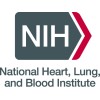
Cardiac Rehabilitation for the Treatment of Refractory Angina
Angina PectorisCoronary DiseaseThe purpose of this study is to determine whether cardiac rehabilitation is a successful treatment for refractory angina, in relation to improvements in cardiovascular risk factors, physical ability, symptomology, quality of life and psychological morbidity.

Aspirin Non-responsiveness and Clopidogrel Endpoint Trial.
Coronary Heart DiseaseAngina Pectoris1 moreIn the ASCET study, 1000 patients with documented coronary heart disease will be randomized to either continued treatment with aspirin 160 mg/d or change to clopidogrel 75mg/d. Clinical endpoints will be recorded for at least 2 years and related to the initial aspirin response, assessed by the PFA-100® method, to investigate whether aspirin non-responders have higher composite event rate than responders or whether Clopidogrel treatment in patients non-responsive to aspirin will reduce their risk of future clinical events. The clinical events are the composite of unstable angina, myocardial infarction, stroke or death.

Investigation of Leukocyte Trafficking Into Skin Blisters During Cardiopulmonary Bypass
Ischemic Heart DiseaseAngina PectorisThe purpose of this study was to see if the heart-lung machine involved in cardiac surgery increases the movement of activated white blood cells from the bloodstream into the patient's tissues and also to see if aprotinin usage during surgery reduces this effect.

Bypass Angioplasty Revascularization Investigation (BARI)
Angina PectorisCardiovascular Diseases4 moreTo assess the relative long-term safety and efficacy of percutaneous transluminal coronary angioplasty (PTCA) and coronary artery bypass graft (CABG) surgery in patients with multivessel disease and severe angina or ischemia who required revascularization and had coronary anatomy suitable for either procedure.

Distal vs. Forearm Radial Artery Access
Coronary Artery DiseaseAngina13 moreThe Distal Radial Access (DRA) to the coronaries has emerged recently. It's done via the distal radial artery in the radial fossa, which is known as the snuff-box. The rationale of conducting this research is to assess this new access advantages and disadvantages, in comparison with the standard conventional forearm radial access and examine if it's worthy to be a future alternative method for coronary angiography. It aims to randomly compare between the new distal radial access via the snuffbox and the conventional forearm radial access for percutaneous coronary angiography and angioplasty procedures. The objectives of comparing both procedures are to analyze the frequency of complications in terms of occlusion, arterial spasm, hematoma, and to weigh accesses effectiveness in terms of time and attempts to puncture, crossover rate, procedure duration, hemostasis time, and convenience of the patients and operators. Candidates for coronary angiography are being randomized into the interventional group to undergo the angiography through the distal radial artery as the access site, or the control group accessing through the radial artery in the forearm. Procedural and post procedural outcomes and complications are being reported while patients are in hospital. All patients undergo doppler ultrasonography within 24 hours after the procedure.

Precision Medicine With Zibotentan in Microvascular Angina
Microvascular AnginaMicrovascular angina (MVA) is caused by abnormalities of the small vessels in the heart. Endothelin is a small chemical that circulates and accumulates in the blood vessel walls, causing them to narrow or go into spasm and thicken in the longer term especially as levels of endothelin increase. As a result, patients experience pain, psychological burden and an inability to carry out daily activities. Originally developed by AstraZeneca for cancer treatment, prior research has confirmed that Zibotentan relaxes the small blood vessels of patients with MVA which lends support to the idea that Zibotentan may bring some benefits to patients with MVA. This trial therefore proposes to look into re-purposing zibotentan as a new treatment for patients with MVA. The primary objective is to assess the effect of add-on treatment with Zibotentan to treadmill exercise times in adult patients with MVA and impaired exercise intolerance. Zibotentan could provide a new treatment pathway for patients, as well as be made available to the NHS at substantially lower cost than the currently used medications. The trial aims to initially invite approx. 356 participants for genetic testing. A minimum of 100 participants will go forward into the main study, receiving either 10mg zibotentan or a dummy matched tablet (placebo) daily over two 12 weeks periods of each, completing their final visit at week 34. The study assessments will involve a health check at each visit, including information on the patient's wellbeing, blood tests, some quality of life questionnaires, and an exercise test. Participants will also have the option to consent to additional sub-study cardiovascular MRI scanning. Finally, participants will be invited to provide consent for long-term follow-up (maximum 20 years) of their electronic medical records (no additional patient contact).

Cardiac Rehabilitation in Patients With Refractory Angina
Refractory AnginaThe purpose of this study is to evaluate the safety and feasibility of cardiovascular rehabilitation in Patients with refractory angina, evaluate the effect of cardiovascular rehabilitation in patients with angina Refractory, by maximal oxygen consumption (VO2max) and global myocardial ischemic load by Stress Echocardiography; To evaluate the presence of myocardial injury, caused by physical stress, through ultra-sensitive troponin after sessions of aerobic physical activity, evaluating the behavior during the training period; To evaluate the effect of rehabilitation on the modulation of sympathetic activity and inflammation, muscular blood flow and lipid metabolism; To evaluate of the effect of rehabilitation on ventricular function through Stress echocardiography; Detection of ischemic episodes and arrhythmias identified during the Rehabilitation sessions through external cardiac monitoring (telemetry); Evaluate the quality of life assessment through the SF-36 questionnaire, Canadian Cardiovascular Society, the number of symptomatic episodes of ischemia, daily sublingual nitrate intake.

Coronary Sinus Reducer for Treatment of Refractory Angina - COSIRA
Refractory AnginaThe purpose of this study is to determine if the Reducer is safe and effective in treating the symptoms of refractory angina in patients that suffer from refractory angina who demonstrate reversible ischemia.

Sirolimus-eluting Stents With Biodegradable Polymer Versus an Everolimus-eluting Stents
Coronary Artery DiseaseAngina Pectoris1 moreCoronary artery stents have improved the safety and efficacy of percutaneous coronary intervention for coronary artery disease. Drug-eluting stents have been shown to decrease neointimal hyperplasia and to reduce the rate of restenosis and target-lesion revascularization as compared to bare-metal stents. Drug-eluting stents consist of a metallic platform and a therapeutic substance that is usually released from a polymer matrix. A previous study utilizing a bioresorbable polymer has demonstrated a favorable safety and efficacy profile in a large-scale clinical trial as compared to a first-generation druf-eluting stent (LEADERS trial). The objective of the study is to compare the safety and efficacy of a sirolimus-eluting stent with a biodegradable polymer with an everolimus-eluting stent with a durable polymer in a prospective multicenter randomized controlled non-inferiority trial in patients undergoing percutaneous coronary intervention in routine clinical practice.

Intensive Statin Treatment in Chinese Coronary Artery Disease Patients Undergoing PCI
Non-ST Segment Elevation Myocardial InfarctionUnstable Angina Pectoris1 moreThis randomized, open label, controlled, parallel group study is designed to test whether 2-day high dose atorvastatin administration before PCI and 30-day continuous intensive atorvastatin treatment is superior to usual care, in terms of peri-PCI cardiovascular events, as well as 6-month prognosis. The goal is to set up an optimized protocol for peri-PCI statin treatment in Chinese CHD patients. Safety will also be observed.
